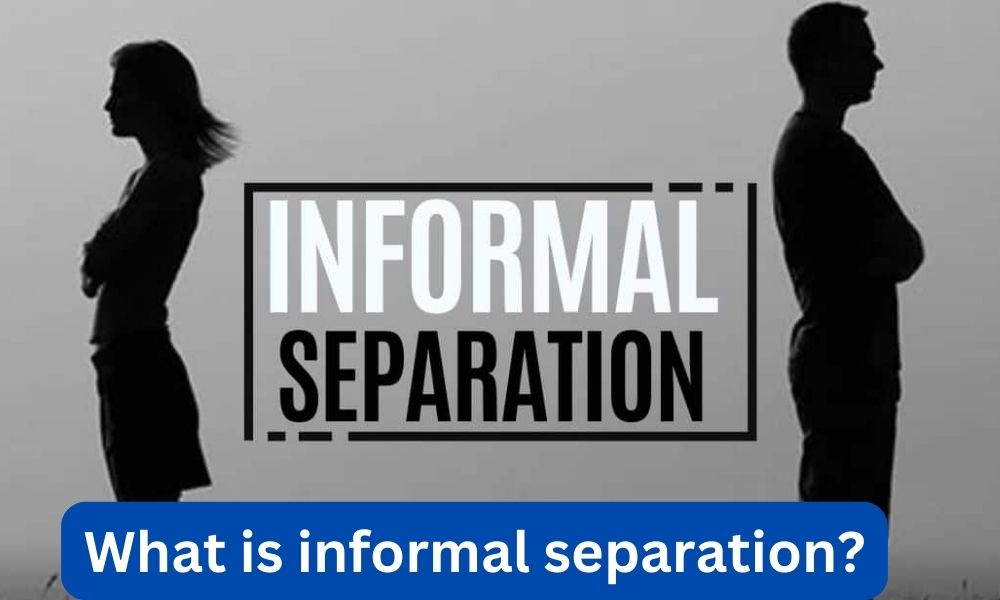When it comes to relationships, separation is often seen as a formal legal process that involves filing for divorce or obtaining a legal separation agreement. However, there is another type of separation that is less known but equally significant – informal separation. Informal separation refers to a situation where a couple decides to live apart and lead separate lives without going through the legal process of divorce or obtaining a formal separation agreement. In this article, we will explore what informal separation entails, its implications, and how it differs from other forms of separation.
Contents
1. Understanding Informal Separation
Informal separation occurs when a couple decides to live apart without legally ending their marriage or obtaining a formal separation agreement. It is often an alternative to divorce or legal separation, allowing couples to take a break from their relationship and assess whether they want to continue or end it. Informal separation can be a temporary arrangement or a long-term decision, depending on the couple’s circumstances and intentions.
Unlike divorce or legal separation, informal separation does not involve the court system or require legal documentation. Couples can simply decide to live apart and establish their own rules and arrangements. This flexibility can be appealing to couples who want to maintain some level of connection or financial benefits while taking time apart.
Read:What does ketamine infusion feel like?2. Reasons for Informal Separation
There are various reasons why couples may choose informal separation over divorce or legal separation:
- 1. Space and Reflection: Informal separation allows couples to have some space and time apart to reflect on their relationship without the immediate pressure of divorce. It provides an opportunity for introspection and evaluation of the relationship’s strengths and weaknesses.
- 2. Financial Considerations: Divorce can be financially burdensome, especially when it involves dividing assets and paying legal fees. Informal separation allows couples to maintain certain financial benefits, such as shared health insurance or tax benefits, while living apart.
- 3. Parenting Arrangements: For couples with children, informal separation can provide a transitional period where they can establish new parenting arrangements and assess the impact of separation on their children before making a final decision.
- 4. Religious or Cultural Constraints: In some cases, couples may choose informal separation due to religious or cultural beliefs that discourage divorce. Informal separation allows them to live apart while still adhering to their cultural or religious values.
3. Implications of Informal Separation
While informal separation may seem like a less complicated option compared to divorce or legal separation, it still has significant implications:
Read:What does the llorona tattoo mean?- 1. Emotional Impact: Informal separation can be emotionally challenging for both partners. It involves adjusting to a new living arrangement, dealing with feelings of uncertainty, and navigating the complexities of a relationship in limbo.
- 2. Lack of Legal Protection: Unlike divorce or legal separation, informal separation does not provide legal protection or guidelines for issues such as property division, child custody, or spousal support. This can lead to conflicts and disputes if the couple decides to end the separation or move towards divorce.
- 3. Ambiguity: Informal separation can create ambiguity in the relationship, as there are no clear boundaries or rules. This can lead to misunderstandings, disagreements, and difficulties in moving forward.
- 4. Impact on Children: If the couple has children, informal separation can have a significant impact on them. Children may experience confusion, instability, and emotional distress due to the uncertainty surrounding their parents’ relationship.
4. Case Studies and Statistics
Let’s take a look at a few case studies and statistics to gain a better understanding of informal separation:
Case Study 1:
John and Sarah have been married for ten years and have been experiencing marital difficulties for the past year. They decide to separate informally to take some time apart and work on their issues. During the separation, they attend couples therapy and engage in individual self-reflection. After six months, they decide to reconcile and work on rebuilding their relationship.
Read:What are the benefits of marriageCase Study 2:
Michael and Lisa have been married for fifteen years and have grown apart over time. They decide to separate informally and live in separate residences while maintaining joint ownership of their family home. They establish a co-parenting plan for their two children and continue to share financial responsibilities. After two years of informal separation, they decide to proceed with a divorce.
Statistics:
According to a study conducted by the National Center for Family & Marriage Research:
- Approximately 29% of separated couples in the United States choose informal separation over divorce or legal separation.
- Informal separation has been on the rise in recent years, with an increase of 15% compared to a decade ago.
- Among couples who choose informal separation, 42% eventually reconcile, while 58% proceed with a divorce or legal separation.
5. How Informal Separation Differs from Other Forms of Separation
Informal separation differs from other forms of separation, such as divorce or legal separation, in several ways:
- 1. Legal Status: Divorce and legal separation involve a formal legal process and result in the termination of the marriage or the establishment of a legal separation agreement. Informal separation, on the other hand, does not have any legal status.
- 2. Financial Considerations: Divorce and legal separation often involve the division of assets, debts, and financial responsibilities. Informal separation allows couples to maintain certain financial benefits and arrangements without going through the formal process.
- 3. Child Custody and Support: Divorce and legal separation require the establishment of child custody and support arrangements. Informal separation may involve temporary or informal agreements, but they do not have the same legal weight.
- 4. Reconciliation: Informal separation provides an opportunity for couples to reconcile and work on their relationship without going through the process of divorce or legal separation. Divorce and legal separation, once finalized, are more difficult to reverse.
6. Summary
Informal separation is a significant aspect of relationship dynamics that often goes unnoticed. It provides couples with an alternative to divorce or legal separation, allowing them to take a break from their relationship and assess its future. While informal separation offers flexibility and certain benefits, it also comes with emotional challenges, lack of legal protection, and potential impact on children. Understanding the implications and differences between informal separation and other forms of separation is crucial for couples considering this option. Ultimately, whether a couple chooses informal separation or another form of separation depends on their unique circumstances, values, and goals for the future.









